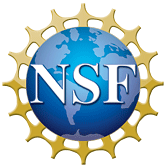Detectable Sources for ARISE
Next: Extended Integration Time Up: 86-GHz Blazar Imaging on Previous: Source Counts
Detectable Sources for ARISE
We assume that a ground telescope with a sensitivity
comparable to that of a VLBA antenna (such as an element of the
Australia Telescope) will be used in the Southern Hemisphere.
Then, Table 2 shows that the total number of detectable sources
is near 210 if a typical observed brightness temperature of
![]() K is assumed, or about
90 for an observed brightness temperature near
K is assumed, or about
90 for an observed brightness temperature near ![]() K. A correction for incompleteness would raise the
number of sources to more than 300 if
K. A correction for incompleteness would raise the
number of sources to more than 300 if ![]() K, but would have little effect if
K, but would have little effect if ![]() K. Table 3 summarizes the number of detectable
sources as a function of data rate, given that all other
parameters remain fixed, for the two different values of the
observed brightness temperature. (No incompleteness correction
has been made.) This table indicates that the number of
detectable sources is reduced below the desirable threshold of
100 for a data rate less than 4 Gbit sec
K. Table 3 summarizes the number of detectable
sources as a function of data rate, given that all other
parameters remain fixed, for the two different values of the
observed brightness temperature. (No incompleteness correction
has been made.) This table indicates that the number of
detectable sources is reduced below the desirable threshold of
100 for a data rate less than 4 Gbit sec![]() .
In addition, the reduction in detectable sources is dramatic if
the observed brightness temperatures are significantly lower than
.
In addition, the reduction in detectable sources is dramatic if
the observed brightness temperatures are significantly lower than
![]() K, so the data-rate
requirement depends critically on the assumed brightness
temperature distribution. It might be possible to gain back a
factor of 1.5-2 by using global fringe-fitting with the VLBA, but
this improvement is not assumed because of the lack of experience
at 86 GHz. Other options for recovery of a larger number of
sources are discussed below.
K, so the data-rate
requirement depends critically on the assumed brightness
temperature distribution. It might be possible to gain back a
factor of 1.5-2 by using global fringe-fitting with the VLBA, but
this improvement is not assumed because of the lack of experience
at 86 GHz. Other options for recovery of a larger number of
sources are discussed below.
| Table 3. Detectable 86-GHz Sources for ARISE-VLBA Baseline | |||
| Data Rate | Detection Threshold | Number | |
| (Gbit
sec |
(mJy) | ||
| 8 | 120 mJy | 211 | 88 |
| 4 | 170 mJy | 147 | 50 |
| 2 | 240 mJy | 88 | 29 |
| 1 | 340 mJy | 47 | 20 |
Next: Extended Integration Time Up: 86-GHz Blazar Imaging on Previous: Source Counts




Connect with NRAO